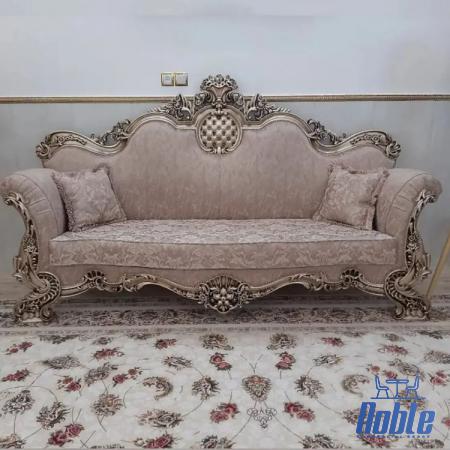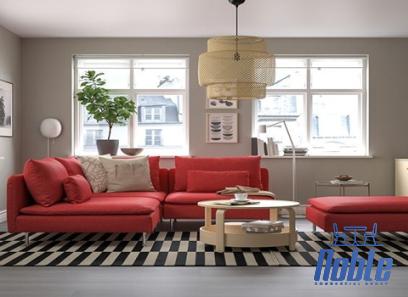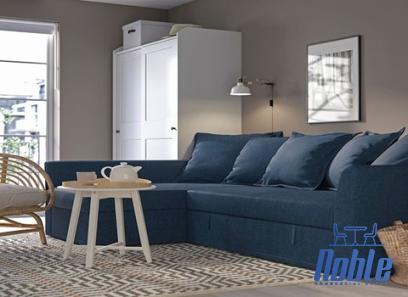Traditionally, architectural practice has been dominated by the eye/sight. In recent decades, though, architects and designers have increasingly started to consider the other senses, namely sound, touch (including proprioception, kinesthesis, and the vestibular sense), smell, and on rare occasions, even taste in their work. As yet, there has been little recognition of the growing understanding of the multisensory nature of the human mind that has emerged from the field of cognitive neuroscience research. This review therefore provides a summary of the role of the human senses in architectural design practice, both when considered individually and, more importantly, when studied collectively. For it is only by recognizing the fundamentally multisensory nature of perception that one can really hope to explain a number of surprising crossmodal environmental or atmospheric interactions, such as between lighting colour and thermal comfort and between sound and the perceived safety of public space. At the same time, however, the contemporary focus on synaesthetic design needs to be reframed in terms of the crossmodal correspondences and multisensory integration, at least if the most is to be made of multisensory interactions and synergies that have been uncovered in recent years. Looking to the future, the hope is that architectural design practice will increasingly incorporate our growing understanding of the human senses, and how they influence one another. Such a multisensory approach will hopefully lead to the development of buildings and urban spaces that do a better job of promoting our social, cognitive, and emotional development, rather than hindering it, as has too often been the case previously. Significance statement Architecture exerts a profound influence over our well-being, given that the majority of the world’s population living in urban areas spend something like 95% of their time indoors. However, the majority of architecture is designed for the eye of the beholder, and tends to neglect the non-visual senses of hearing, smell, touch, and even taste. This neglect may be partially to blame for a number of problems faced by many in society today including everything from sick-building syndrome (SBS) to seasonal affective disorder (SAD), not to mention the growing problem of noise pollution. However, in order to design buildings and environments that promote our health and well-being, it is necessary not only to consider the impact of the various senses on a building’s inhabitants, but also to be aware of the way in which sensory atmospheric/environmental cues interact. Multisensory perception research provides relevant insights concerning the rules governing sensory integration in the perception of objects and events. This review extends that approach to the understanding of how multisensory environments and atmospheres affect us, in part depending on how we cognitively interpret, and/or attribute, their sources. It is argued that the confusing notion of synaesthetic design should be replaced by an approach to multisensory congruency that is based on the emerging literature on crossmodal correspondences instead. Ultimately, the hope is that such a multisensory approach, in transitioning from the laboratory to the real world application domain of architectural design practice, steel sofa chair will lead on to the development of buildings and urban spaces that do a better job of promoting our social, cognitive, and emotional development, rather than hindering it, as has too often been the case previously.

Financial Growth of Steel Sofa Chair in Recent Years
 set low price Sofas are an integral part of any living room. The overall look of any sofa gets enhanced by the covers that we place over them. Sofa covers can make or break the entire look of the sofa. These covers help to protect the sofa from dust and dirt. Moreover, if you have pets at home, sofa covers will prevent them from destroying the sofas.
set low price Sofas are an integral part of any living room. The overall look of any sofa gets enhanced by the covers that we place over them. Sofa covers can make or break the entire look of the sofa. These covers help to protect the sofa from dust and dirt. Moreover, if you have pets at home, sofa covers will prevent them from destroying the sofas.
Is It a Wise Choice to Invest Money in Steel Sofa Chair Industry? ?
 design for home After a decade of looking around her home base of New York City, architect Andrea Leung finally found a space worthy of her grandmother’s magic: a 1,600-square-foot Tribeca loft. She kept its verdigris tin ceilings and…
design for home After a decade of looking around her home base of New York City, architect Andrea Leung finally found a space worthy of her grandmother’s magic: a 1,600-square-foot Tribeca loft. She kept its verdigris tin ceilings and…
An Introduction to the Best Supplier of Steel Sofa Chair in the Middle East
 Stainless steel,[1][2][3]: 276 originally called rustless steel, is any one of a group of ferrous alloys that contain a minimum of approximately 11% chromium,[4]: 3 [5] a composition that prevents the iron from rusting and provides heat-resistant properties.[4]: 3 [5][6][7][8] Different types of stainless steel include the elements carbon, nitrogen, aluminium, silicon, sulfur, titanium, nickel, copper, selenium, niobium, and molybdenum.[4]: 3 Specific types of stainless steel are often designated by their AISI three-digit number, e.g., 304 stainless.[9] The ISO 15510 standard lists the chemical compositions of stainless steels of the specifications in existing ISO, ASTM, EN, JIS, and GB standards in a useful interchange table.[10] Stainless steel’s resistance to rusting results from the presence of chromium in the alloy, which forms a passive film that protects the underlying material from corrosion attack, and can self-heal in the presence of oxygen.[4]: 3 Corrosion resistance can be increased further by the following means: increase chromium content to more than 11%[5] add nickel to at least 8%[5] add molybdenum (which also improves resistance to pitting corrosion)[5] The addition of nitrogen also improves resistance to pitting corrosion and increases mechanical strength.[5] Thus, there are numerous grades of stainless steel with varying chromium and molybdenum contents to suit the environment the alloy must endure.[11]
Stainless steel,[1][2][3]: 276 originally called rustless steel, is any one of a group of ferrous alloys that contain a minimum of approximately 11% chromium,[4]: 3 [5] a composition that prevents the iron from rusting and provides heat-resistant properties.[4]: 3 [5][6][7][8] Different types of stainless steel include the elements carbon, nitrogen, aluminium, silicon, sulfur, titanium, nickel, copper, selenium, niobium, and molybdenum.[4]: 3 Specific types of stainless steel are often designated by their AISI three-digit number, e.g., 304 stainless.[9] The ISO 15510 standard lists the chemical compositions of stainless steels of the specifications in existing ISO, ASTM, EN, JIS, and GB standards in a useful interchange table.[10] Stainless steel’s resistance to rusting results from the presence of chromium in the alloy, which forms a passive film that protects the underlying material from corrosion attack, and can self-heal in the presence of oxygen.[4]: 3 Corrosion resistance can be increased further by the following means: increase chromium content to more than 11%[5] add nickel to at least 8%[5] add molybdenum (which also improves resistance to pitting corrosion)[5] The addition of nitrogen also improves resistance to pitting corrosion and increases mechanical strength.[5] Thus, there are numerous grades of stainless steel with varying chromium and molybdenum contents to suit the environment the alloy must endure.[11]










Your comment submitted.